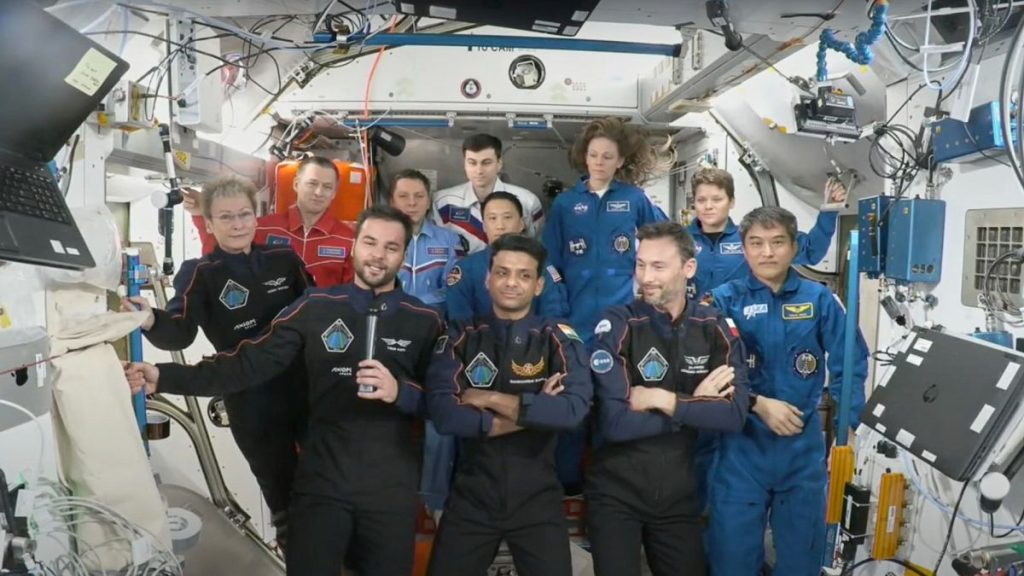On July 14, 2025, three astronauts from Poland, Hungary, and India concluded a significant private mission aboard the International Space Station (ISS) and returned to Earth via a SpaceX capsule. This mission marked a milestone for these nations, the first time in over four decades that they launched astronauts into orbit. The astronauts participated in scientific experiments and engaged with leaders and schoolchildren from their home countries throughout their stay, highlighting the potential of international collaboration in space exploration.
| Article Subheadings |
|---|
| 1) A Historic Return Trip |
| 2) Mission Overview and Objectives |
| 3) Scientific Contributions Made in Orbit |
| 4) Government Engagement and Public Interaction |
| 5) Future of Space Collaboration |
A Historic Return Trip
The SpaceX capsule that carried the astronauts from the ISS undocked successfully, initiating its descent towards Earth. The capsule was slated to splash down in the Pacific Ocean near Southern California the following morning. This marked an important milestone as it was not only the return of the first visitors from Poland, Hungary, and India, but also a significant achievement for private space travel, facilitated by commercial collaborations. The trio, known for their contributions to space exploration, received a warm send-off, a poignant moment reflecting the excitement of their journey as they re-entered the atmosphere.
Mission Overview and Objectives
The private mission launched on June 25 from NASA’s Kennedy Space Center, aiming to provide a platform for collaboration between the three countries. This journey was not merely a significant endeavor for the astronauts but a historic occasion for their respective nations. Shubhanshu Shukla from India, Slawosz Uznanski-Wisniewski from Poland, and Tibor Kapu from Hungary undertook the mission with aspirations of expanding their countries’ footprints in space exploration. Spanning a multitude of objectives, the mission sought to inspire national pride and showcase achievements in scientific innovation.
Scientific Contributions Made in Orbit
During their time aboard the ISS, the astronauts executed numerous scientific experiments, addressing various fields of research. Their collaboration with scientists involved significant studies, including experiments related to material science, fluid dynamics, and biotechnology. By harnessing the unique microgravity environment of the ISS, the astronauts aimed to explore phenomena that could lead to breakthroughs in these disciplines. This aspect of their mission underlined the potential contributions that lesser-known scientific communities can offer on a global stage, as they worked closely with experts back on Earth to analyze results and data.
Government Engagement and Public Interaction
Integral to the mission’s success was the engagement with their home countries back on Earth. The astronauts facilitated communication with local leaders, including their respective prime ministers, enriching the dialogue on the importance of space exploration. Education played a vital role, with the astronauts also interacting with schoolchildren, creating an avenue for inspiring the next generation.
“We will spread the word in our countries that these things are within our reach. These things are possible even for smaller countries like ours,”
expressed Tibor Kapu, encapsulating the essence of their engagement. This interaction not only elevated national interest but also created excitement surrounding the possibilities of space science.
Future of Space Collaboration
This historic mission has laid the groundwork for future collaborations among countries, particularly those with emerging space programs. Axiom Space, the company responsible for chartering the flight, is keen on continuously expanding its clientele, targeting not only wealthy tourists but also nation-states that seek representation in the space domain. NASA has shown robust support for such commercial ventures, facilitating a shift towards a more inclusive approach to space exploration. As Axiom prepares for subsequent missions, other countries may look to emulate this model, leveraging partnerships to stimulate scientific research and education.
| No. | Key Points |
|---|---|
| 1 | The astronauts’ return marks the first mission for Poland, Hungary, and India into space in over 40 years. |
| 2 | The mission was launched from NASA’s Kennedy Space Center on June 25, 2025. |
| 3 | The astronauts executed numerous scientific experiments while aboard the ISS. |
| 4 | The mission included engagement with the astronauts’ home countries through communications with leaders and schoolchildren. |
| 5 | Future collaborations in space exploration may be facilitated by commercial spaceflight initiatives. |
Summary
In terms of significance, this private mission not only exemplifies the possibilities offered by commercial space exploration but also promotes international partnerships in science and research. By representing countries with burgeoning space ambitions, the astronauts have made historical strides that resonate across the globe. As the world witnesses the accelerating pace of space travel, collaboration among nations will be crucial in unlocking the full potential of space exploration, benefiting humanity as a whole.
Frequently Asked Questions
Question: What was the main objective of the astronauts’ mission to the ISS?
The primary objective was to conduct scientific experiments and foster international collaboration among Poland, Hungary, and India in space exploration.
Question: How did the astronauts engage with their home countries during the mission?
The astronauts communicated with their prime ministers and interacted with schoolchildren, aiming to inspire interest and awareness about space exploration.
Question: What role does Axiom Space play in the context of commercial space travel?
Axiom Space facilitates private missions to the ISS, targeting both wealthy individuals and countries looking to represent themselves in space, thereby contributing to the growing commercial spaceflight industry.


